
16 Dec 2014 by Jason Law CM –
Two days from now, the final installment of ‘The Hobbit’ trilogy will be showing on our nation’s cinema screen. It has been a long journey for fans of the franchise, more than 10 years in span. Fans of Tolkien and the source materials for the films have had an even longer history of affection for the world of Middle-Earth.
There is something remarkable about this phenomenon that has touched the hearts of so many but where exactly does such strength come from? This article does not pretend to be written for Tolkien experts or meant to be a devotional, but rather, is more intended to guide Christians to look at the Lord of the Rings franchise in a new way.
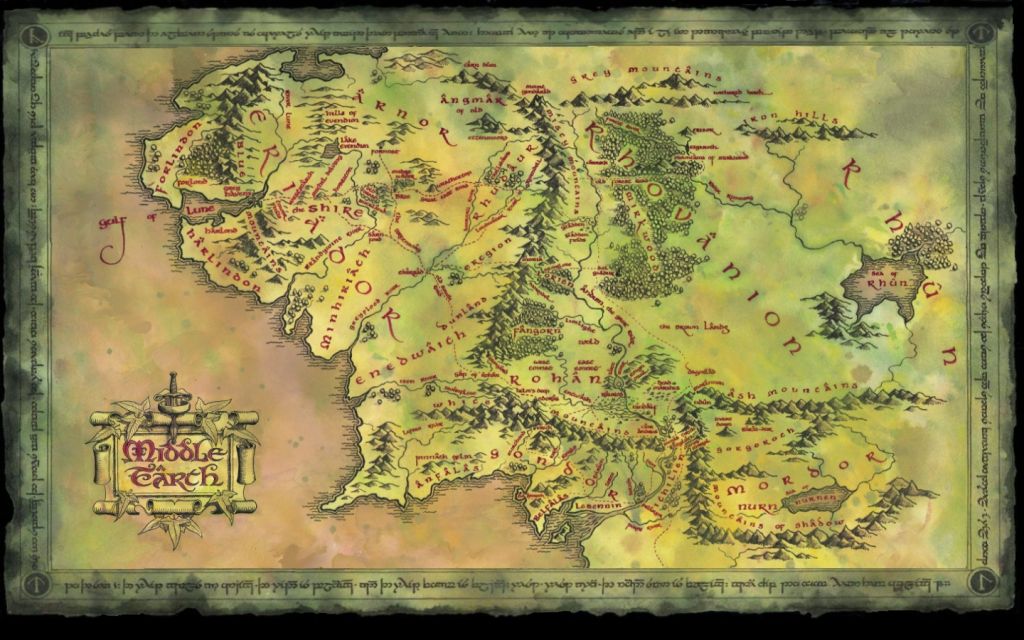
Due to constraints, this article aims to take a look at Tolkien’s worldview rather than going too deep into the specifics of the plot in the books. With the caveat of reading too much into things, there is however still a way of reconciling Tolkien’s world with our Christian faith.
Tolkien and his conception of Middle-Earth
Tolkien’s conception for his world is a grand one in design, complete with whole systems of culture and languages, genealogies, multiple volumes of history, and a codicil the size of a small novel. Behind every great work of this size and nature, there is a certain worldview of significance to its author, and a force that impelled him to expend the amount of time and effort that he did.

The influences at the back of Tolkien’s masterwork are as vast as the work itself. Into it, Tolkien poured his love for linguistic systems and the Nordic and Germanic myths. Also into it went Tolkien’s harrowing experiences of World War I, especially at the Battle of the Somme. But Tolkien was also a distinctly devout believer of Christ and this faith infused much of his mythology. Though Tolkien never meant for Middle-Earth to be a direct analogy of the Christian world, he couldn’t help but bleed his faith and worldview into the work.
Tolkien’s faith was instilled in him since a young age, and he always believed that the universal love for story and myths had something deep to say about humanity. In an age of increasing industrialization, commercialism and materialism, he held to the belief that there was more to reality and the world than impersonal and mechanistic forces. Tolkien’s belief in the meaning and significance of myth help to pave the way for the conversion of an agnostic friend of his into one of the 20th-century’s greatest theologian.

In a conversation with C.S. Lewis, he argued that because man was created in the image of God, there was planted in every heart the remembrance of our Creator which can never be effaced. The things of God may be perverted by man for his own ends, but he can never run away from who he really is. As such, even pagan myths, no matter how corrupted, actually comes from the homesickness of man for a return to their Creator. Ultimately, Christianity which has a satisfying imaginative as well as intellectual appeal that demands a response from the whole person, returns us to the truths of our rightful nature.
The Creation of Middle-Earth
When Tolkien inscribed his mythology into words, he wrote from this perspective. He believed that man had a God-given endowment to be a sub-creator. When done with the proper skill and revelation, the created work evokes the actual, primary world around us. Albeit in a limited way and as an imitator rather than originator, the human creator parallels the Divine Creator in bringing truths into the world. We sense and recognize this in our response to beauty and spirituality, and it is from this that the power of myths such as those of Middle-Earth comes from.

Through the ontology of Middle-Earth, it is clear that Tolkien had a distinctively Augustinian worldview. Though equally derived from Norse mythology, this worldview is evident even in the cosmology of Tolkien’s mythology. Middle-Earth is created by a sole and supreme being known as Eru Iluvatar, which in the language of the Elves, is basically a compound of ‘He That Is Alone’ (Eru) and ‘Father of All’ (Iluvatar). Eru is supreme and completely outside and beyond the world. The whole cosmos is imbued with his spirit, and there is no creation that does not bear his imprint. His is the only power to create.
Below him are the angelic beings known as the Valar, employed by Eru to participate in the making of the music of the cosmos, a partial analogy to the concept of Logos. Below the Valar are the Maiar. Together the Valar and Maiar comprise a body of pure spirits known as the Ainur. Below the Ainur are the elves and ents, then the humans and hobbits, and then the dwarves who are like the sons of the earth. They all form parts of an interlocking hierarchy that starts with absolute unity and then work down through levels of increasing materiality, reflecting the neo-Platonic spiritual ladder in Augustine’s City of God.
Melkor and Sauron
In the Lord of the Rings and Hobbit movies, we know who Sauron is. He seems to be the main antagonist of the whole story. But before Sauron came to power, he was a Maiar chief lieutenant of an even more powerful Ainur, the Valar Melkor. Melkor’s story had a distinctive resemblance to the story of Satan.

Melkor was the most powerful of the Ainur until pride corrupted his heart and he aspired to the level of Eru. He tried to subvert and corrupt Eru’s Music of the cosmos through elements of his own design. For this rebellion, he was thrown into the Void but his malign influence did not end there. Melkor became known by a darker name as Morgoth, just as Lucifer became Satan.
Battle of Good and Evil in Middle-Earth
Augustine held that evil did not have the power to create beings of its own. Evil is the corruption of what were originally good creations of God. In much the same way, the evil forces in Middle-Earth did not have the power to create, but only to torture and corrupt what were once noble elves into becoming orcs. Addiction and sin as shown through the Rings of Power is subtle and can even corrupt good intentions or great men, and pride is often the start of such corruption.
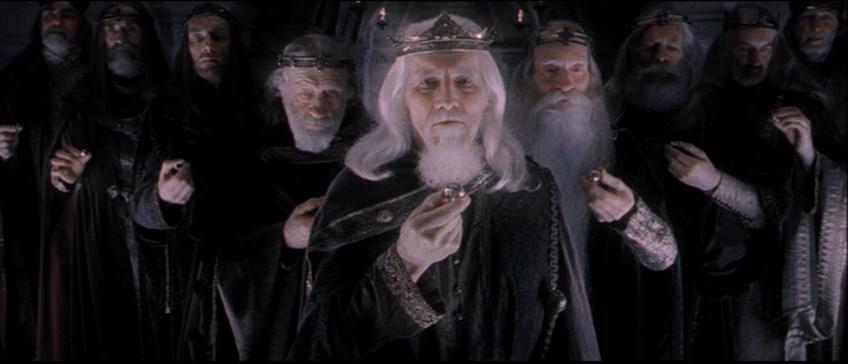
Understanding Middle-Earth’s cosmology, we can see its battle between good and evil taking a larger vantage point than any single character. The stories of Middle-Earth have three principal threads; motivation, providence, and purpose.
Motivation in Middle-Earth
Sarah Arthur writes in her book ‘Walking with Frodo’ that ‘motivation becomes harder and harder to miss the more one gets into the minds of Tolkien’s characters’, and the theme of Fate versus Free Will is dominant throughout the story. The task to destroy the One Ring comes to Frodo, seemingly by accident or fate, but it required Frodo’s voluntary act to bear the ring to Mordor. Bilbo’s journey in ‘The Hobbit’ becomes a shaping of his true potential away from the self-limiting comforts of Bag End. The collective fellowship and unity of the good forces of Middle-Earth was necessary to defeat the forces of evil.
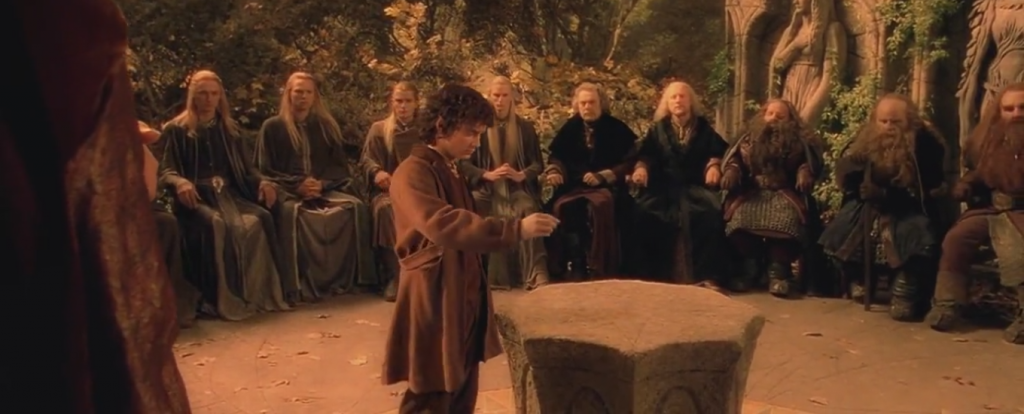
The decisions that the characters take determine their ultimate fate, and all of them had choices to make, some choosing light over darkness, sacrifice over power, or hope over despair. Others are bound by addiction, deceit, or pride. The characters’ response to the lure of power as personified by the One Ring says much about their motivations. Some of the clearest examples of motivation and its result are seen through Samwise Gamgee and Gollum. There are multiple articles on the Internet that discuss these antitheses, the structural heart of the entire story.
Providence in Middle-Earth
Providence or divine intervention is also very prominent in the stories. Sauron’s Ring lands into the hands of the humble and ordinary Baggins family, seemingly by accident, until everything falls into place at the climax in Mount Doom [Bilbo was meant to find the Ring, and not by its maker.{FOTR-The Shadow of the Past}]. Numerous times the heroes are saved from the brink of defeat or death seemingly by chance.

Events shape the characters for their roles and they all have their parts to play in connection to the other characters in the story [You have come and are here met, in this very nick of time, by chance as it may seem. Yet it is not so. Believe rather that it is so ordered…. {FOTR-The Council of Elrond}]. An all-knowing guiding force seem to be able to discern the right motives of the right characters for the right time and prepared the right circumstances for the characters’ responses. The most prominent is the three-fold chosen roles of Frodo as priest, Gandalf as prophet, and Aragorn as king.
Purpose in Middle-Earth
The outcome of Middle-Earth’s events throughout ‘The Hobbit’ and ‘The Lord of the Rings’ came through the interplay between providence and motivation. Everything that the characters went through had a purpose and none of them were the same after the events in the stories. There was a reason that Frodo was picked for the task of destroying the Ring and so on.

If there were no providence, the heroes would have been destroyed by the superior physical forces of evil. If they could not respond with the right motivation, there would have been no meaning for providence. Furthermore, the characters did not necessarily know the outcome of events but they believed that there was a purpose in their trials.
Aaron Belz wrote in Books & Culture magazine, “It was Tolkien’s purpose to show characters who don’t know where they are going, but who from an omniscient perspective are part of a grand narrative.” He was a man of deepest faith in the sovereignty of God. Tolkien had a purpose for writing the Middle-Earth stories (http://www.elvenminstrel.com/tolkien/christian.htm).
Tolkien’s Augustinian Worldview
Just as Augustine was influenced by the Platonic ideals of beauty, so was Tolkien. This is reflected by the very names of the characters themselves. The elves had flowing names of elegant beauty, while the orcs have harsh-sounding names that reflect their brutality. Yet though the Rings of Power seem to be things of such beauty, in the end that beauty turns out to be a great deception, intended by Sauron to subvert the other races to his power.
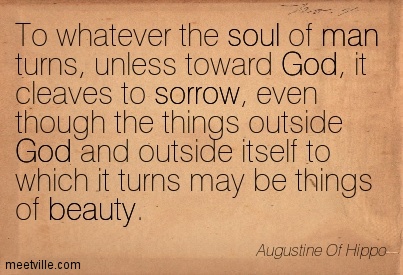
Priscilla Meyer writes about the Platonic tradition: ‘In the Platonic tradition, beauty is a means to absolute truth, a source of all that is good, capable of transfiguring man. But the world abounds with false images of beauty that are diabolic deceptions. Divine intention is [often] disguised, and some characters are ruined by their inability to discern it, while the reader is made to work to unveil a higher truth concealed in their everyday’. This motif runs throughout Tolkien’s Middle-Earth.
NOTE: This article is written based on the author’s understanding of Tolkien and his creation. Tolkien was also influenced by Augustine in his eschatological and ecclesiological viewpoints, as well as in his support of the Just War theory.
For summaries of Augustine’s thoughts, go to http://en.wikipedia.org/wiki/Augustine_of_Hippo#Thought
|Share The Good News|


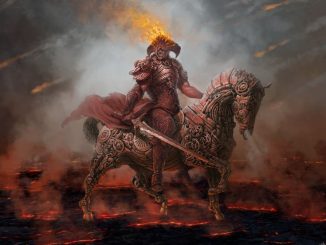

Leave a Reply